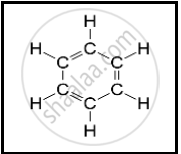Advertisements
Advertisements
प्रश्न
"Carbon prefers to share its valence electrons with other atoms of carbon or with atoms of other elements rather than gaining or losing the valence electrons in order to attain noble gas configuration." Give reasons to justify this statement.
उत्तर
Elements forming ionic compounds achieve this by either gaining or losing electrons from the outermost shell. In the case of carbon, it has four electrons in its outermost shell and needs to gain or lose four electrons to attain a noble gas configuration. If it were to gain or lose electrons -
- It could gain four electrons forming C4- anion. But it would be difficult for the nucleus with six protons to hold on to ten electrons, that is, four extra electrons.
- It could lose four electrons forming C4+ cation. But it would require a large amount of energy to remove four electrons leaving behind a carbon cation with six protons in its nucleus holding on to just two electrons.
Thus, carbon overcomes this problem by sharing its valence electrons with other atoms of carbon or with atoms of other elements and forms covalent compounds.
संबंधित प्रश्न
State one major difference between covalent and ionic bonds and give one example each of covalent and ionic compounds.
What type of bonds are present in H2 molecule? Draw their electron-dot structures.
Why does carbon form compounds mainly by covalent bonding?
Give the formula of the compound that would be formed by the combination of the following pair of elements:
Al and Cl2
Draw the electron-dot structure of HCl compound and state the type of bonding.
One of the following compounds is not ionic in nature. This compound is:
(a) Lithium chloride
(b) Ammonium chloride
(c) Calcium chloride
(d) Carbon tetrachloride
The molecules having triple bond in them are:
(a) oxygen and ethyne
(b) carbon dioxide and ammonia
(c) methane and ethene
(d) nitrogen and ethyne
Methane molecule is non-polar molecule. Explain.
For each compound mentioned above give the formulae of ions formed in aqueous solution.
State the type of bonding in the following molecule.
Methane
Explain the following term with example.
Hetero atom in a carbon compound
The following structural formula belongs to which carbon compound?

Explain the following:
Non-polar covalent compounds are insoluble in water.
Name greenish-yellow gas which also bleaches.
Write an Explanation.
Alkene
Complete the following activity.
Write the names of the hydrocarbons for the following structural formula.
(isobutylene, cyclohexane, propene, cyclohexene, cyclopentane, benzene, propyne, isobutane, propane)
| \[\begin{array}{cc} \phantom{..}\ce{H}\phantom{...}\ce{H}\phantom{...}\ce{H}\\ \phantom{..}|\phantom{....}|\phantom{....}|\\ \ce{H - C - C- C- H}\\ \phantom{.}|\phantom{....}|\phantom{....}|\\ \ce{H - C - H}\\ |\\\ce{H}\end{array}\] |
Which of the following statements are correct for carbon compounds?
- Most carbon compounds are good conductors of electricity.
- Most carbon compounds are poor conductors of electricity.
- Force of attraction between molecules of carbon compounds is not very strong.
- Force of attraction between molecules of carbon compounds is very strong.
Which of the following compound(s) possesses a high melting point?
Molecular reactions are ______ in the covalent compound.
